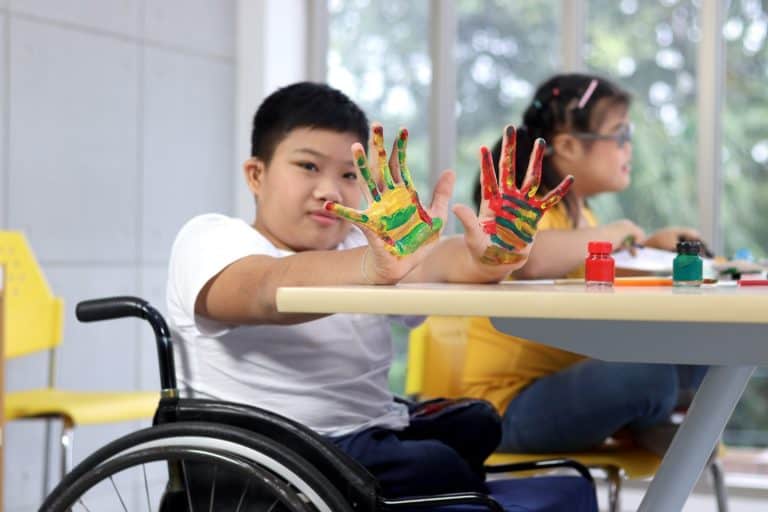
Road Safety Week 2023 – 3 ways we can reduce road accidents
Did you know that every day, on average, five people lose their lives and 82 people are seriously injured on UK roads? That’s one death or serious injury every 16 minutes.
At Bolt Burdon Kemp, we’re committed to reducing this shocking statistic. That’s why we’re joining forces with Brake, as one of their corporate partners, to support their biggest campaign of the year – Road Safety Week.
As a member of the Child Brain Injury team, I’ve seen firsthand the heartbreak that road traffic accidents can cause when children are involved. It’s made me wonder – what more can we do to prevent these accidents and keep children safe?
How can we improve road safety?
1. Protecting school children
Children aged between 11-15-years-old account for most child casualties (52 per cent). As children start secondary school at the age of 11, they are more at risk as they travel further to school and may be starting to walk or cycle there by themselves. They are especially at risk during the winter months – November, December and January see the highest numbers of road traffic collisions involving children. More children are injured or killed on their way home from school – when it’s darker – than on their way there.
School uniform design plays an important part. These are often in dark colours like blue, black, and grey, making it hard for children to be seen. A 2021 study showed that drivers only noticed pedestrians wearing white, grey or black clothes at a distance of 17-50 metres.
The Child Brain Injury Trust (CBIT) runs an annual autumn road safety campaign called “GloWeek” in which they reinforce the message that children should Be Seen Not Hurt. The goal? To encourage children to wear bright colours, especially during these darker months so they’re visible to drivers. Our Child Brain Injury Team is proud to support CBIT in their campaigns and always attend the annual event ‘Agloha’, to raise awareness of the importance of wearing bright and colourful clothing and accessories in the winter months.
In 2010, after two teenagers were killed walking home from school in Northern Ireland, the school redesigned its uniform to incorporate distinctive reflective stripes on the lapels and cuffs. These effectively illuminated the pupil wearing it, making them visible to drivers at distances greater than 200 metres, more than three times the distance of non-reflective uniforms.
Redesigning school uniforms with improved visibility in mind is one solution. Another, quick and simple solution is for children to wear reflective accessories that can be clipped onto school bags, or reflective strips that can be stuck onto coats and bags.
2. Slow down – 20’s plenty!
Lower speeds mean fewer collisions and a reduced severity of injuries. Clients who have suffered severe brain injuries in a road traffic collision would often have avoided injury if the driver had cut their speed.
The greater the impact speed, the greater the chance of death. A pedestrian hit at 30mph has a one in five chance of being killed. This rises significantly to a one in three chance if they are hit at 35mph. Even small increases in speed can lead to an increase in impact severity. Conversely, a pedestrian hit at 20mph has a 1 in 40 chance of being killed – or to put it another way, a 97% chance of survival.
Reducing speed limits to 20mph on residential roads is a key step towards reducing road traffic collisions. On 17 September 2023, Wales implemented a 20mph default for residential roads and 28 million people in the UK now live in places where 20mph is the norm.
There’s a difference between 20mph limits and 20mph zones, though. Areas with 20mph limits have no physical measures to reduce vehicle speeds within the areas. But 20mph zones use traffic calming measures to reduce the adverse impact of motor vehicles on built up areas. While the jury’s out on whether 20mph limits alone reduce road casualties, there is considerable evidence that 20mph zones do reduce road casualties.
I encourage all drivers to think about their speed, especially as we head into winter and visibility decreases, and I hope to see more 20mph speed zones around residential roads in the future.
3. The role of education
I well remember the ‘stop, look, listen and think’ campaign from my school days. The Green Cross Code campaign, which began in 1970 and continues today, encourages children to stop before crossing a road, to look ‘right, left and right again” and then listen for any noises of oncoming vehicles, and finally to think about whether it’s safe to cross the road.
Schools are expected to equip pupils with a sound understanding of risk and with the knowledge and skills necessary to make safe and informed decisions. As such, road safety is a crucial topic in the national curriculum, although schools are free to tailor their local PSHE programme to reflect the needs of their pupils. In this context, many online resources, such as those published by the Department for Transport’s Think! Campaign, are linked to the national curriculum framework, making it easy for teachers to incorporate Road Safety into the classroom.
Outside the classroom too, parents and carers have a vital role to play. RosPA (the Royal Society for the Prevention of Accidents) publishes an excellent guide for parents to support them in teaching their children road safety.
What can we all do?
From my perspective acting for children who’ve suffered a severe brain injury, often in road accidents, I’d like to see redesigned school uniforms incorporating reflective materials and more 20mph zones in residential and built-up areas.
Sadly, however, the three most common factors contributing to accidents involving pedestrians (not just children) are due to pedestrians not looking properly, being careless, reckless or in a hurry, and not judging a vehicle’s path or speed. We can all do our bit by promoting road safety campaigns and raising awareness, but perhaps most of all, we can lead by example: by putting our phones away, paying attention, slowing down, and “stop, look, listen and think!”.










